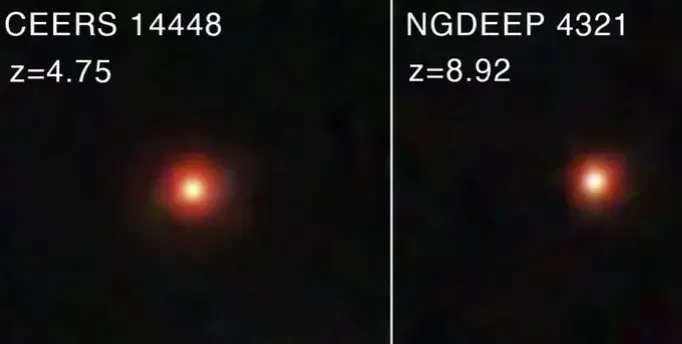
James Webb Telescope Unveils ‘Hidden’ Black Holes, Bridging Quasar Mystery
The James Webb Space Telescope (JWST) has once again revolutionized our understanding of the universe, pinpointing a new class of supermassive black holes lurking in the early cosmos. This groundbreaking discovery potentially bridges a significant gap between the familiar, bright classical quasars and the enigmatic, faint "Little Red Dots" first observed in late 2022.
Classical quasars are active galactic nuclei (AGNs) powered by actively feeding black holes, surrounded by dense dust and easily detectable due to their intense brightness. However, the "Little Red Dots", identified by JWST, are smaller, fainter, and heavily obscured by dust, leaving astronomers puzzled about their relationship to classical quasars.

For over a decade, astronomers have been meticulously scanning the skies with the Subaru Telescope in Hawaii, identifying candidate galaxies within the first billion years after the Big Bang. While the light from these galaxies hinted at more than just star formation, technical limitations prevented definitive confirmation of active galactic nuclei hidden within the dust. Now, thanks to JWST's superior sensitivity, an international team led by Yoshiki Matsuoka of Ehime University has re-examined these intriguing objects. They found nine out of thirteen galaxies showing clear indications of fast-moving gas influenced by the immense gravity of supermassive black holes, confirming the presence of previously unseen, hidden quasars.
"We were surprised to find that obscured quasars are so abundant in the early universe," Matsuoka told Live Science. "This means that a significant fraction of active [supermassive black holes] have been overlooked in the past ground-based surveys."
These “hidden” quasars are as bright as their classical counterparts, but their dust obscuration levels resemble those of the “Little Red Dots.” This paints a compelling picture of a potential evolutionary link between the two AGN types. Independent expert Jorryt Matthee from the Institute of Science and Technology Austria praised the study's robust spectral data, stating that it likely bridges the gap between the rare, brilliant quasars and the smaller, dimmer red dots.

Matsuoka's team plans to further explore 30 more Subaru-selected targets with JWST. By studying the surrounding gas and environments, the team hopes to unravel the mysteries of these hidden quasars and the enigmatic “Little Red Dots”, shedding new light on the evolution of black holes in the early universe.
These new discoveries offer a vital clue to the origins of supermassive black holes in the early universe. As more hidden quasars are found and analyzed, scientists expect to refine our understanding of the universe. What further secrets will JWST unearth about these cosmic giants?
Share your thoughts and theories on these hidden quasars in the comments below!